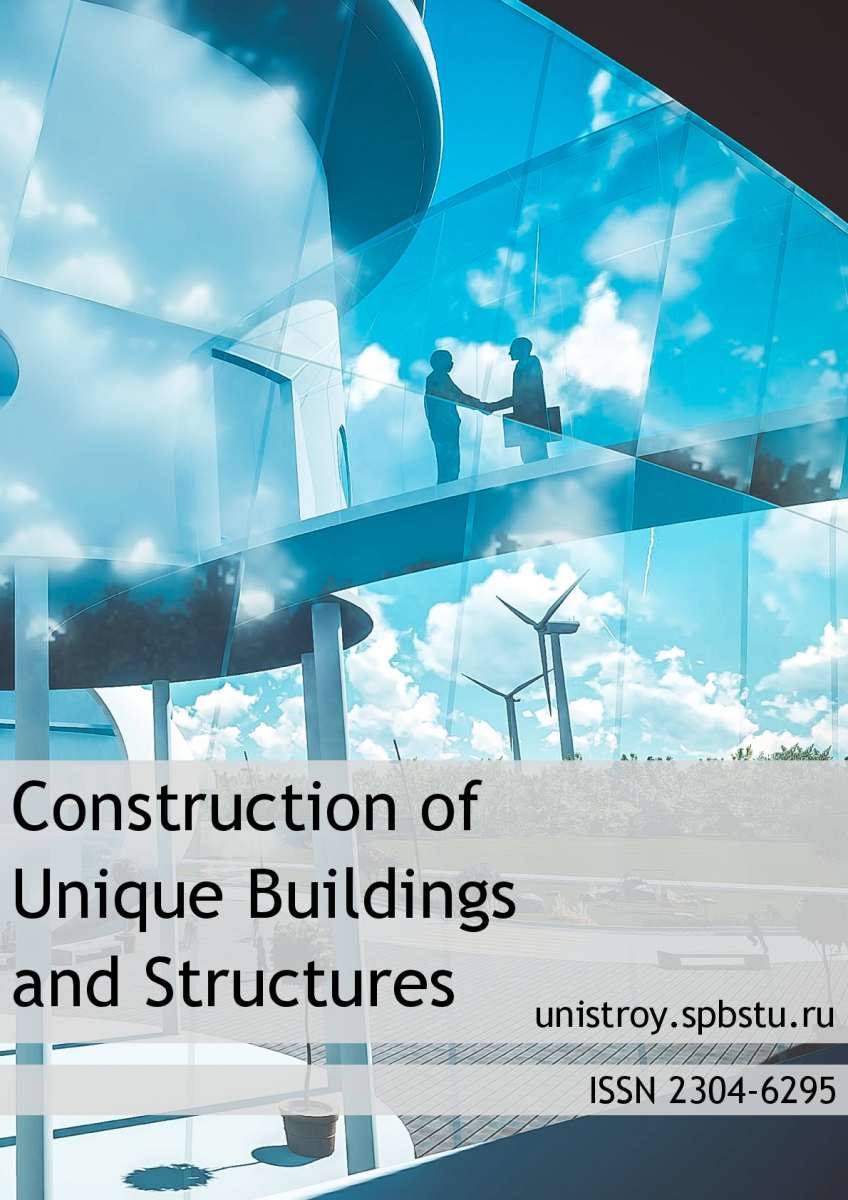Dynamic characteristics and response of buildings of different structural types and configurations
The objects of study are reinforced concrete (RC) frame buildings with varying structural configurations, including height, column orientation, beam-to-column stiffness ratios, and unreinforced masonry (URM) infill walls; multi-story reinforced concrete buildings of various structural configurations, plan aspect ratio, diaphragm cut-outs, and the distribution of lateral load-resisting elements. The study addresses gaps in current seismic design practice by quantifying the effects of these parameters on overall seismic performance. Methods. A series of finite element models were developed to analyze the dynamic response of the buildings. Modal analysis was performed to determine natural periods and mode shapes, and the results were compared to evaluate the impact of each parameter. A parametric analysis is conducted on multi-story reinforced concrete buildings with varying plan aspect ratios, different placements of structural walls, and floor cut-outs. Numerical simulations evaluate the in-plane diaphragm deformations, lateral force distribution, and overall structural response under seismic loading. The results are compared against existing seismic code recommendations to assess their adequacy. Results show that URM infills significantly enhance lateral stiffness, reducing natural periods and altering mode shapes, particularly in open ground story buildings. Column orientation, axial stiffness, and beam-to-column stiffness ratio govern deformation patterns, while rotational flexibility at column bases increases lateral sway. The findings indicate that buildings with large plan aspect ratios (> 4) exhibit significant in-plane diaphragm deformations, leading to uneven force distribution. Structural walls placed exclusively at the building ends exacerbate diaphragm flexibility, whereas a more uniform distribution of lateral load-resisting elements significantly reduces in-plane displacements. The presence of large cut-outs further increases diaphragm deformation, with a rapid escalation observed for openings exceeding 25−30% of the total floor area. The findings emphasize the need for accurate analytical assumptions and modelling technique of structural and non-structural elements to improve seismic design and ensure safer, more resilient buildings.
.png)


